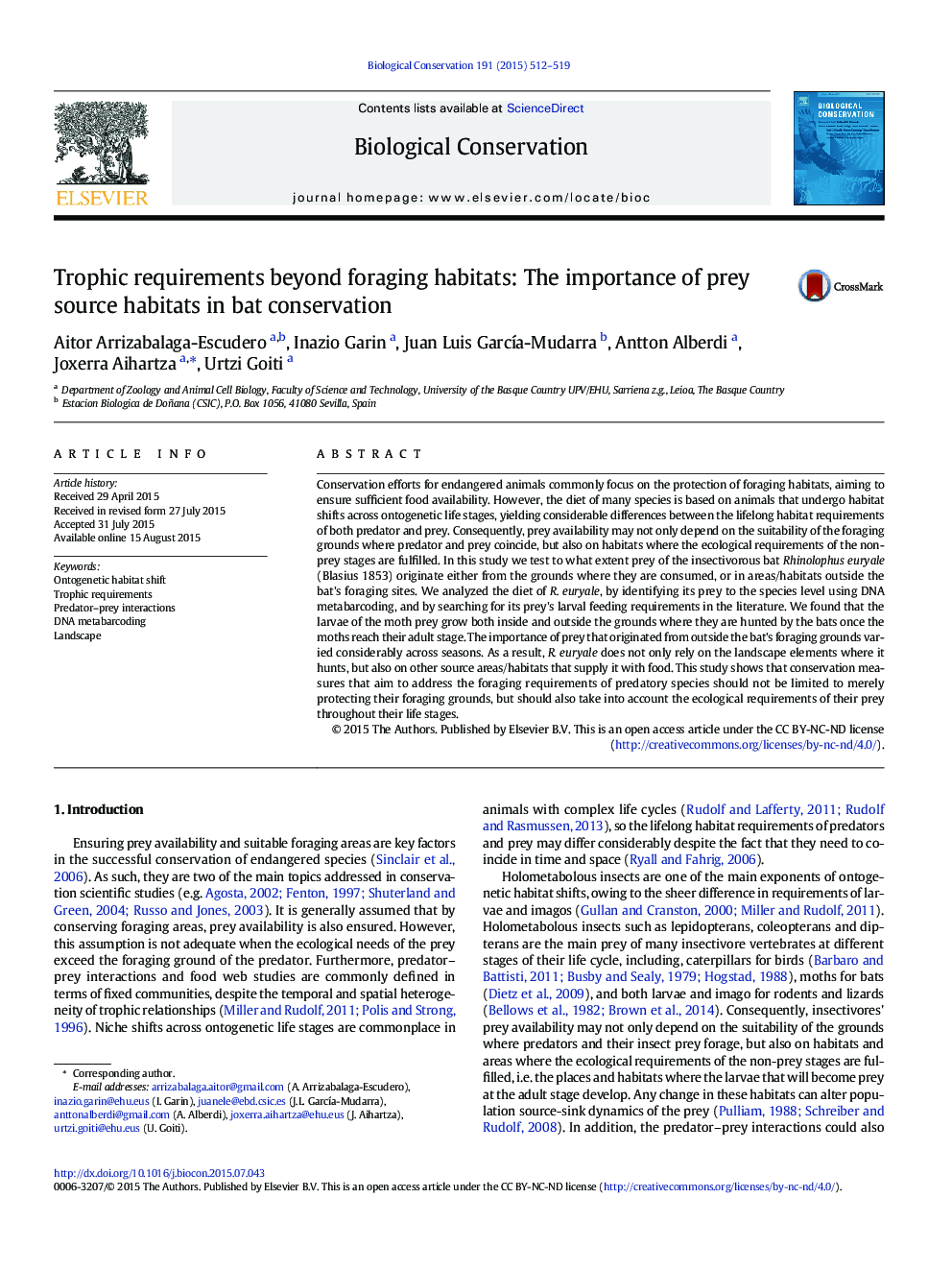| کد مقاله | کد نشریه | سال انتشار | مقاله انگلیسی | نسخه تمام متن |
|---|---|---|---|---|
| 6299030 | 1617910 | 2015 | 8 صفحه PDF | دانلود رایگان |
- We checked the link between source and sink habitats of Rhinolophus euryale's prey.
- The larvae of the moth prey grow up both inside and outside bat's foraging grounds.
- The importance of prey source habitats considerably varied through seasons.
- R. euryale rely on habitats other than those used for foraging.
- Conservation guidelines for predators should include the requirements of prey.
Conservation efforts for endangered animals commonly focus on the protection of foraging habitats, aiming to ensure sufficient food availability. However, the diet of many species is based on animals that undergo habitat shifts across ontogenetic life stages, yielding considerable differences between the lifelong habitat requirements of both predator and prey. Consequently, prey availability may not only depend on the suitability of the foraging grounds where predator and prey coincide, but also on habitats where the ecological requirements of the non-prey stages are fulfilled. In this study we test to what extent prey of the insectivorous bat Rhinolophus euryale (Blasius 1853) originate either from the grounds where they are consumed, or in areas/habitats outside the bat's foraging sites. We analyzed the diet of R. euryale, by identifying its prey to the species level using DNA metabarcoding, and by searching for its prey's larval feeding requirements in the literature. We found that the larvae of the moth prey grow both inside and outside the grounds where they are hunted by the bats once the moths reach their adult stage. The importance of prey that originated from outside the bat's foraging grounds varied considerably across seasons. As a result, R. euryale does not only rely on the landscape elements where it hunts, but also on other source areas/habitats that supply it with food. This study shows that conservation measures that aim to address the foraging requirements of predatory species should not be limited to merely protecting their foraging grounds, but should also take into account the ecological requirements of their prey throughout their life stages.
Journal: Biological Conservation - Volume 191, November 2015, Pages 512-519
